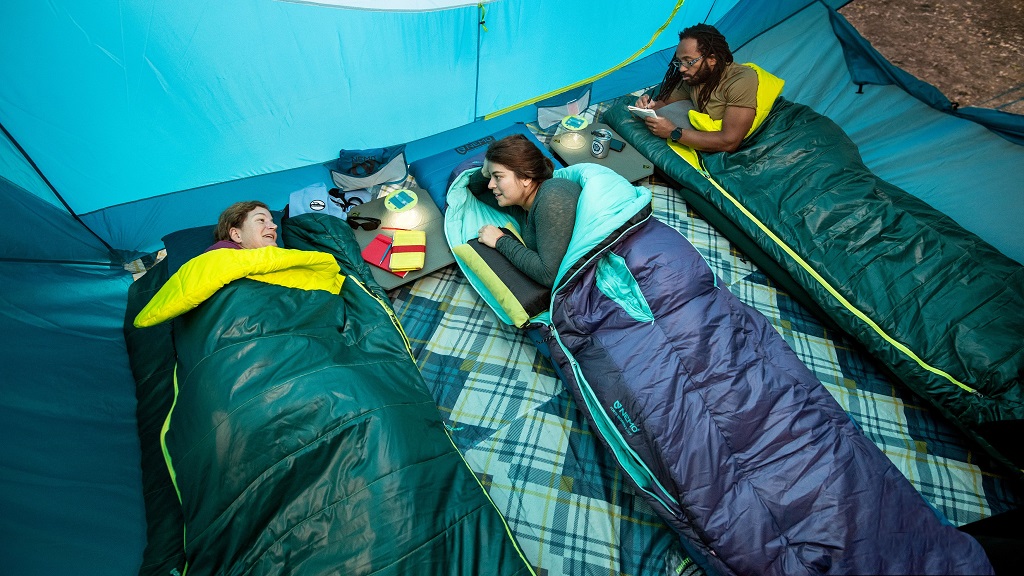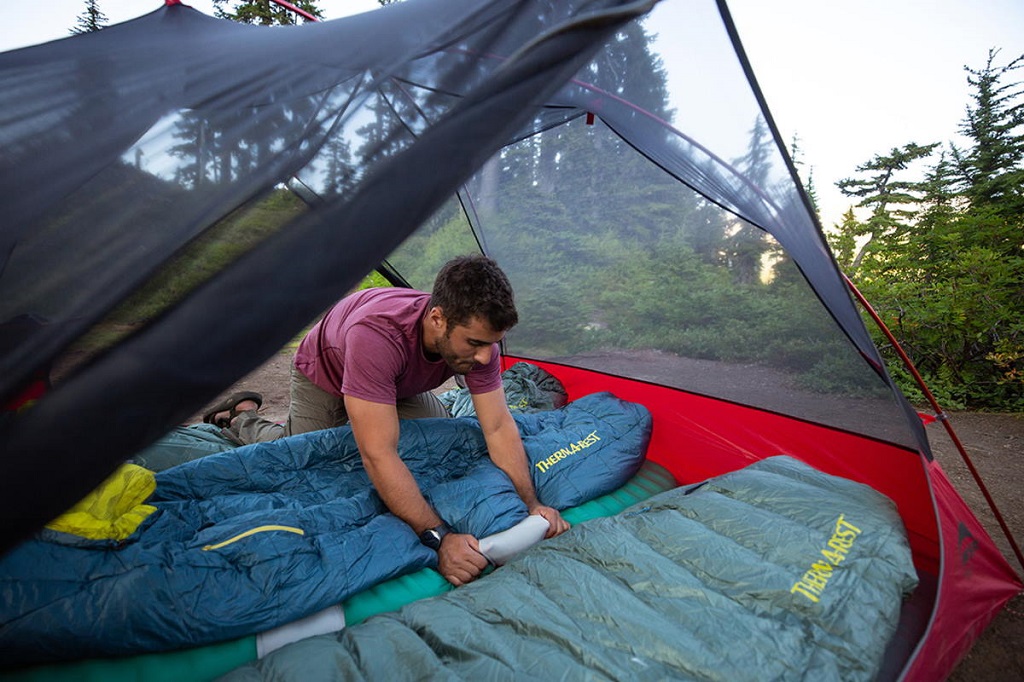
As the weather warms up and summer approaches, many of us start planning camping trips to enjoy the great outdoors. A key piece of gear for comfortable summer camping is having the right sleeping bag. With so many options on the market, choosing the best summer sleeping bag can be tricky. This comprehensive guide will walk you through everything you need to know to pick the perfect sleeping bags for summer camping needs.
What to Look for in Sleeping Bags for Summer Camping
Temperature Rating
The first thing to consider when shopping for a summer sleeping bag is the temperature rating. This indicates the lowest temperature at which the bag will keep you warm. For summer camping, you’ll want a bag with a rating between +30°F to +50°F. This provides enough insulation for chilly summer nights but prevents overheating on warmer ones. Pay close attention to the temperature rating and choose one suitable for the conditions you expect.
Weight and Packability
Since summer camping involves a lot of hiking and moving around, weight and packability are key. Look for lightweight sleeping bags made from materials like high-quality nylon or downfill. The lighter the bag, the easier it will be to carry. Also, consider compression size – some sleeping bags compress down quite small for storage in your pack.
Shape and Size
Sleeping bags come in different shapes suited for particular camping scenarios. Mummy bags are tapered at the feet for warmth, while rectangular bags allow more room to move around. If you’ll be car camping where space in your tent isn’t an issue, a roomier rectangular bag can be comfortable. But for backpacking trips, choose a mummy bag to minimize weight.
You’ll also want to get the right size. Sleeping bags are typically available in regular or long/tall sizes. Choose one that aligns with your height to allow enough space to sleep comfortably.
Features and Extras
Some features and extras to look out for when comparing summer sleeping bags include:
- Hood – having a hood you can cinch down keeps your head warm and prevents heat loss.
- Draft tubes – these insulate along the zipper to prevent cold air leaks.
- Pockets – interior pockets are handy for stashing small items and valuables.
- Zipper side – does the bag zip on the left or right side? Choose your preference.
- Stuff sack – a stuff sack makes storage and transport easier.
- Camping pad sleeve – allows you to attach a sleeping pad to the bag securely.
By evaluating these aspects, you can find a summer sleeping bag well suited to your particular needs and camping style.
Types of Summer Sleeping Bag Insulation
An important factor in choosing any sleeping bag is the type of insulation. The insulation is what determines the bag’s warmth, weight, compressibility, and durability. Here are the main options for summer sleeping bag insulation:
Down
Down is the warmest, lightest, and most compressible insulation material. It comes from the undercoat of ducks and geese. High-quality sleeping bags tend to be more expensive but provide exceptional heat for their low weight. The superior loft and compressibility of down does come with a tradeoff, though – it loses insulation value when wet.
For summer camping, however, moisture and dampness are less likely to be an issue compared to other seasons. So, a lightweight, packable down sleeping bag can be a great choice for summer backpacking trips. Look for bags with water-resistant or waterproof down to get the best warmth and dryness.
Synthetic
Synthetic insulation is usually made from polyester. Brand names like PrimaLoft are common. Artificial materials are cheaper than down and retain more insulation value when wet. This makes them a bit more forgiving in humid or damp conditions. The tradeoff is that synthetic bags are bulkier and not as compressible as down.
A roomier synthetic sleeping bag can be very comfortable for summer car camping or family camping when weight isn’t as big of a concern. Just be aware that they take up more space in your pack.
Responsible Down Standard (RDS) Certified Materials
When comparing sleeping bags, look for ones with down certified by the Responsible Down Standard (RDS). This ensures the down does not come from unethical live-plucking or force-feeding of birds. Choosing RDS-approved materials ensures your gear adheres to animal welfare standards.
Sleeping Bag Shell and Lining Fabrics
In addition to insulation type, summer sleeping bags also vary in their shell and lining fabrics. These materials impact the bag’s properties too:
Shell Fabric
The outer shell guards the insulation and protects the bag from the elements. Nylon and polyester shells treated with durable water-repellant (DWR) finishes are common. For lightweight bags, look for ripstop nylon, which adds durability without adding weight. Water-resistant shells prevent moisture from compromising insulation.
Lining Fabric
Linings provide comfort next to your skin. Materials like polyester or nylon taffeta offer soft, breathable comfort. Some linings have antimicrobial treatments to inhibit odors and bacteria growth.
By selecting a sleeping bag with the right shell and lining combination, you get the best mix of durability, water resistance and comfort for summer camping.
Sleeping Bag Cost and Budget
As with most gear, sleeping bags come in a wide range of prices. You can find basic bags for $60-100, mid-range options for $100-200, and premium bags for $200+. How much should you spend? Here are some factors to consider:
- Intended use: Casual car campers can opt for budget-friendly bags, while serious backpackers may want to invest in something lighter and more packable.
- Expected conditions: A bag for potentially cold/wet weather may warrant more spending for better insulation and water resistance.
- Frequency of use: If you use your bag often, spending more for quality and durability makes sense. Infrequent users can go cheaper.
- Brand: Premium outdoor brands like Western Mountaineering or Feathered Friends charge top dollar for their high-end bags.
- Fill power (down bags): This measures the loft and quality of down. Higher numbers (700-900+) mean higher fill power and increased cost.
Consider your personal needs and budget. With some diligence, you can find high-quality summer sleeping bags at reasonable prices from reputable brands like Kelty, REI Co-op, Marmot, and Sierra Designs.
Choosing the Right Sleeping Bag: Key Considerations
Here is a quick recap of the key factors to keep in mind when selecting a summer sleeping bag:
- Temperature rating – choose one suitable for expected low temps (e.g., +30°F to +50°F)
- Weight and packability – lighter and more compact is better for summer backpacking
- Shape and size – Mummy bags maximize warmth; get the right length for your height
- Insulation type – down or synthetic both work for summer; down packs smaller
- Features – consider a hood, draft tubes, pad sleeve, etc. based on your needs
- Fabrics – look for durable, water-resistant shells and comfortable linings
- Budget – set a budget based on intended use and frequency; synthetics are cheaper than down
By weighing all these variables and thinking about your specific camping context, you can zero in on the ideal summer sleeping bag for you. Don’t focus on any one factor alone. Finding the best balance for your needs and budget is key.
5 Top-Rated Sleeping Bags for Summer Camping
Ready to shop for a summer sleeping bag? Here are five top-rated options to consider across different price points:
1. Kelty Callisto 30
- Temperature Rating: 30°F
- Fill: 600 fill power DriDown (RDS-certified down)
- Weight: 1 lb 14 oz
- Price: $$
This lightweight mummy bag combines packability and comfort. Advanced insulation keeps you warm even when damp. Great for 3-season backpacking and camping.
2. REI Co-op Magma 15
- Temperature Rating: 15°C/59°F
- Fill: DWR-treated 850 fill power down
- Weight: 1 lb 3 oz
- Price: $$$
This is a premium sleeping bag loaded with responsibly sourced down insulation. It compresses down small for backpacking and has a water-resistant finish.
3. Marmot Hydrogen
- Temperature Rating: 30°F
- Fill: 600 fill power down
- Weight: 2 lbs 4 oz
- Price: $$
This roomy mummy model has a MemBrain lining for moisture management. Down insulation keeps you warm and cozy all summer long. It’s great for car or base camping.
5. Sierra Designs Cloud 20
- Temperature Rating: 20°F
- Fill: 20D Polyester Fabric Shell With Synthetic Insulation
- Weight: 2 lbs 12 oz
- Price: $
An affordable and durable synthetic sleeping bag. The soft polyester lining and roomy rectangular shape provide cozy comfort for summer camping trips.
6. Feathered Friends Swallow SummerLite
- Temperature Rating: 40°F
- Fill: 900+ fill power goose down
- Weight: 1 lb 2 oz
- Price: $$$
This premium ultralight sleeping bag is designed for three-season backpacking. It features high-fill power down wrapped in a lightweight 10D shell and compresses down very small.
Important Sleeping Bag Care and Maintenance Tips
Investing in a quality summer sleeping bag means taking good care of it so it lasts for years. Here are some key care and maintenance tips:
- Let your sleeping bag completely air dry after trips before compressing it for storage to prevent moisture buildup.
- During storage, keep your sleeping bag loosely packed in a breathable storage sack rather than compressed tightly.
- Wash sleeping bags infrequently and use a mild, front-loading washer on a gentle, cold water setting. Air dry completely.
- For spot cleaning, use a soft brush and mild soap. Take care not to oversaturate the fabric.
- Check zippers regularly and use wax or lubricant to ensure smooth functioning.
- Inspect your sleeping bag for damage after each trip and repair minor tears immediately.
- For down bags, use a down revitalizer spray occasionally to restore the loft and prolong insulation performance.
Taking the time to care for your summer sleeping bag properly will help it deliver many warm, comfy nights under the stars!
Frequently Asked Questions
1. What temperature rating do I need for summer camping?
For summer camping, a sleeping bag rated around +30°F to +50°F is ideal. This provides insulation for chilly summer nights but prevents overheating on warmer ones. Look at the expected low temperatures for the area and season you’ll be camping in.
2. Is down or synthetic insulation better for summer?
Both down and synthetic insulations work well for summer bags. Down compresses smaller but loses some insulation value if damp. Synthetics insulate when wet but are bulkier. Synthetics are fine for car camping, but down is better for backpacking.
3. What size summer sleeping bag should I get?
Check the length options and get a bag that matches your height. Most come in regular or long/tall sizes. You want the room to sleep comfortably without excess bulk. Mummy bags are more fitted than rectangular bags.
4. How do I make a sleeping bag last longer?
Let your bag fully air dry after trips. Store it loosely rather than tightly compressed. Wash infrequently in a gentle, cold setting. Spot clean as needed with mild soap and a soft brush. Check zippers and repair damage promptly.
5. Are expensive sleeping bags worth it for summer camping?
You can find quality bags under $200 for summer camping. But avid campers and backpackers may want to invest $200+ in a lightweight, durable bag from a premium brand that’ll last for years. Know your needs and budget.
Final Thoughts
I hope this comprehensive sleeping bags for summer camping guide has given you all the information you need to pick out the perfect summer sleeping bag. The right mix of insulation, fabrics, features, and temperature rating based on your intended use and budget is key. Explore Best Travel Trailer Brands for Full Time Living Invest in a quality bag, take good care of it, and it will provide you with many restful nights camping under the stars this summer and for seasons to come! Let me know if you have any other camping gear questions!


